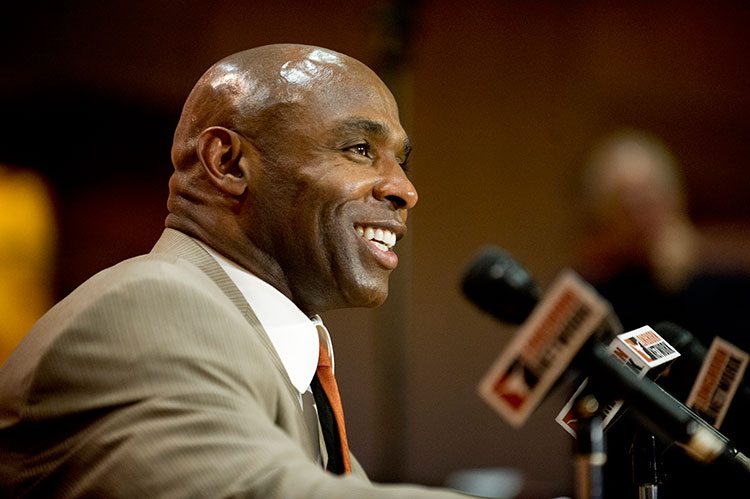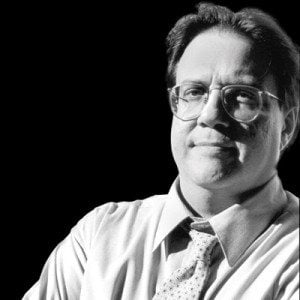
Media Must Do More to Mirror Texas’ Racial Diversity

Above: Charlie Strong
When Charlie Strong was named football coach at the University of Texas on Jan. 5, many regional and national news accounts duly noted that he is making history as the first African-American head coach of a men’s team in UT’s 131-year history.
The Houston Chronicle mentioned the racial significance of the hire in the second paragraph of its first story. The Austin American-Statesman and San Antonio Express-News stories referenced it in their fifth paragraphs. The Dallas Morning News noted it in the ninth paragraph.
Strong’s new job is newsworthy, and his race, given the lack of precedent, is arguably newsworthy as well. What hasn’t been widely discussed is how coverage of the hire highlights the lack of diversity among the state’s mainstream media and how that influences coverage. Almost all of the state’s newsrooms, The Texas Observer’s included, are predominantly white.
It will be interesting in that light to see how the cover of the state’s flagship magazine, Texas Monthly, responds to the news of Strong’s hiring.
In the 1970s’ 82 issues, two black people appeared unaccompanied on Texas Monthly’s cover: U.S. Congresswoman Barbara Jordan and Cootie Hill, a street hustler from Houston’s Fifth Ward. (Two other black faces were featured on the 1970s covers, both as maids attending to white women).
There were no solo black Texans on the covers of the magazine’s 120 issues in the 1980s.
Four of Texas Monthly’s 120 covers during the 1990s featured stand-alone black Texans: athletes Dennis Rodman, Hakeem Olajuwon, George Foreman and Michael Irvin—the latter depicted with a white-powder moustache. (Carl Lewis was featured on another 1990s cover alongside two white men).
Two stand-alone black Texans graced the 120 covers of the 2000s: quarterback Vince Young and singer Beyoncé. (Others include Michael Irvin and Emmitt Smith flanking white quarterback Troy Aikman).
From 2010 until now, no Texas Monthly cover has featured an image of an unaccompanied black person.
They’re not alone. The Observer, while taking a conceptually different and celebrity-averse approach to cover design, has done little better in representing the state’s diversity on its front page.
Why does it matter? According to the Texas Monthly website, “The single most important page of a magazine is its cover. It’s the one that editors and art directors spend the most time thinking about, arguing over, and tweaking right up until the last minute.”
I’ve worked for three national magazines (The Sporting News, Talk and People), and the “cover meetings” always had one purely pragmatic aim: to figure out what would sell. Race was always the invisible elephant in the room. I once witnessed an exceedingly awkward debate about why a People cover was not being devoted to megastar Beyoncé: because she was, well, not the right person at the moment.
In an increasingly diverse place like Texas—a state still wrestling with bitter racial divisions—every publication needs to do more to mirror the population. Every publication needs more minority writers, more minority news, more minority covers.
I asked Jake Silverstein, the talented and thoughtful editor of Texas Monthly, about the challenge:
“Absolutely there is more to be done in terms of diversity at Texas Monthly. No question. In the past, the magazine has sometimes struggled to represent the full array of voices in Texas. We have made some strides the past few years but we still have a long way to go. … It’s something I take very seriously. What I can say is that this is a problem throughout the magazine industry, and it’s my hope that in years to come Texas Monthly can be a leader in helping to fix it.”
Then I asked Observer editor Dave Mann the same question. He, too, recognizes the problem:
“Lack of diversity—both on the cover of our magazine and, especially, in our newsroom—has long been a problem at the Observer, and I’m deeply troubled by it. We’ve worked in recent years to have our magazine better represent the state we cover, and while we’ve had some successes, our efforts haven’t been enough. … We have to do better.”
Charlie Strong was hired to make sure the Longhorns perform better on the field. His arrival is as good a reminder as any that Texas media has plenty of room for improvement as well.


